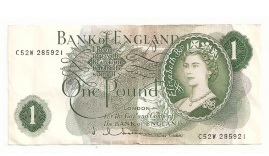Since January, there have been a few large swings in relative value, with much of that occurring in the last two weeks. Dependent upon which financial assets you were holding, you could be 78% richer or 12% poorer.
The British Pound Sterling has fallen from $1.47 to $1.29 against the U.S. dollar. Anyone holding British pounds since January has experienced a 12% drop in their purchasing power. When your home currency is weak or falling, you are better off holding some assets in any stronger currency or gold and silver.
Since January, gold has risen against the British pound by 47% and silver has risen by 66%. If you were a British resident and held a portion of your savings in gold and silver, then your savings would have increased in purchasing power by 57%. If you had kept all of your savings in British pounds, then you would have experienced a 12% loss in purchasing power. The difference between those two holdings, a 12% loss and a 57% gain, is a staggering 78% gap.
Trends and revaluations against gold and silver can occur overnight or over months and years. But sooner or later all paper currencies, which are backed by nothing, fall in value against gold and silver.
So which group of investors would you prefer to be in over the last 7 months: the one 78% richer that hedged, or the one 12% poorer that didn’t hedge? Two years ago, Russia lost +20% of their purchasing power to gold; last year Canadians lost 25% of their purchasing power to gold, this year it was Britain. Which currency will devalue next year? It could be yours.

